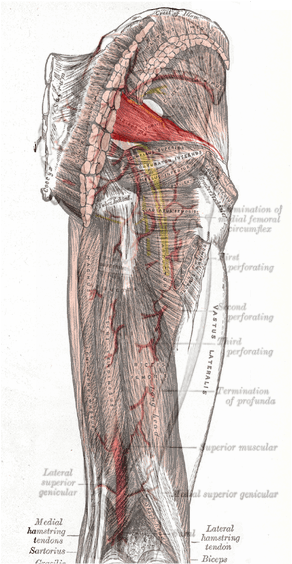WHAT CAUSES PIRIFORMIS SYNDROME?
|
The Fascial Adhesions that are so often responsible for causing Piriformis Syndrome, do not always occur at the Piriformis Muscle itself. The Piriformis Muscle just happens to be the place where the Sciatic Nerve gets squeezed or pinched. The pelvic torque caused by underlying Scar Tissue can occur in any number of places — sometimes multiple places. I am slowly learning that this phenomenon is far more common than I ever imagined. Dr. Russell Schierling from a previous post
|
Although there are a host of “causes” of Piriformis Syndrome, it usually involves some sort of tissue binding or restriction. What’s really crazy is that this binding / restriction can come from almost anywhere in the pelvis. Allow me to explain. Yesterday’s early morning patient was a person that I had seen a few times previously for buttock pain and SCIATICA. The last time I saw him, we really had a breakthrough. As I worked and he talked, he told me something that had not been revealed during our initial exam / consult. Nearly a decade ago, he had done an extremely challenging leg workout, then turned around and played in a big softball tourney — something he had not done in years. He ended up pulling a QUAD / HIP FLEXOR.
Although his Hip Flexor tested out equal as far as its range of motion when compared to the opposite side, after finding quantum amounts of TENDINOSIS and FASCIAL ADHESIONS, and subsequently breaking it up, his severe buttock pain diminished greatly. For the record, he also had severe THORACOLUMBAR FASCIAL TEARS (I call them tears because they were visible to the naked eye prior to treatment).
PUTTING IT ALL TOGETHER AND FIGURING IT OUT
When it comes to helping people with Piriformis Syndrome (or for that matter, virtually any number of other CHRONIC PAIN SYNDROMES), every patient I see gives me a better idea of what to look for with future patients. Anything that puts torque on the pelvis and pinches the Sciatic Nerve in the Sciatic Notch (see picture above), can cause pain. This restriction does not necessarily have to be at the Piriformis Muscle itself. It’s just that the Piriformis Muscle happens to be the anatomical structure that physically touches and puts the pressure on the Sciatic Nerve. This is most likely true even in the case of common anatomical anomalies (the Sciatic Nerve going thru the Piriformis Muscle, the Sciatic Nerve going over the Piriformis Muscle — thru the suprapiriformis foramen, or the Sciatic Nerve splitting into two parts and going through both the foramen before coming back together to form one unified Sciatic Nerve).

